|
M. FORD CREECH ANTIQUES & FINE ARTS
WILLIAM AND MARY SILVER SUCKET FORK
Adam King, London, 1691
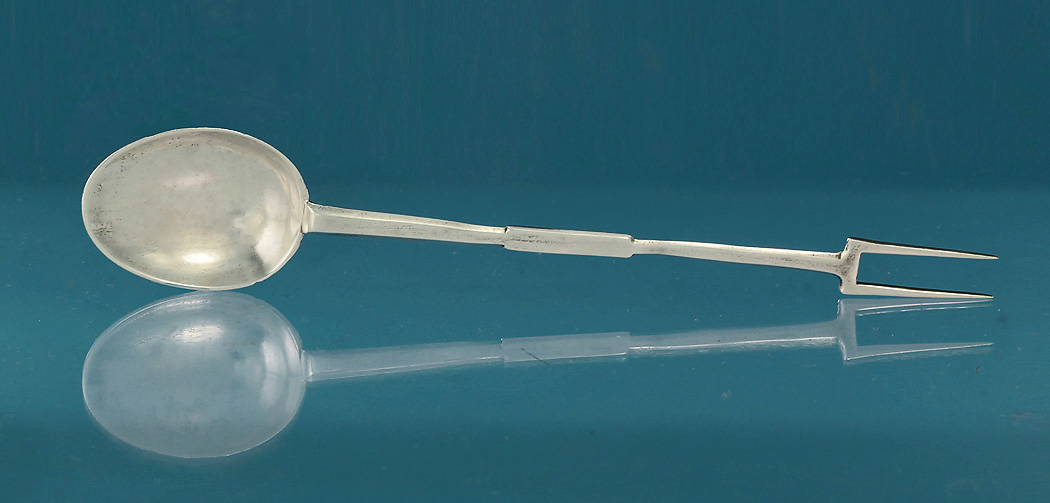
|
|
The two-pronged fork with flat stepped shaft
opposing a small oval bowl with ribbed rattail attachment;
mark London Silver Spoonmakers, 1500-1697, Timothy Kent, p.50, AK over escallop between pellets
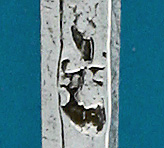
Literature : Illustrated
"The Collector's Dictionary of the Silver and Gold
of Great Britain and North America",
Michael Clayton, 1971, Pl. 60, p. 36
Provenance :
Christie's 2006, July 12, Sale 5070, lot 225;
Alastair Dickenson Ltd.
Adam King :
"Apprenticed to his elder brother John in 1663 and free in 1671,
he was one of a numerous family from Bremhill in Wiltshire, with tow other brothers,
Thomas and Rosert, in the goldsmith' trade"., T. Kent, "London Silver Spoonmakers, 1500-1697"
Condition : Excellent, slight bend to shaft;
tiny surface scratches and brasions appropriate to age and usage (has not been 'tidied up')
6" Long / 0.4 oz.
SOLD
#7844
Please Inquire
|
|
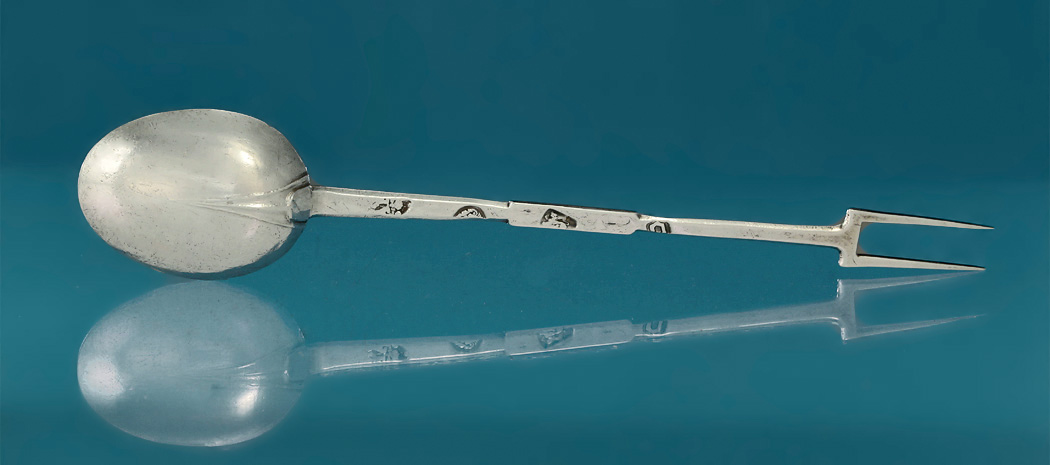



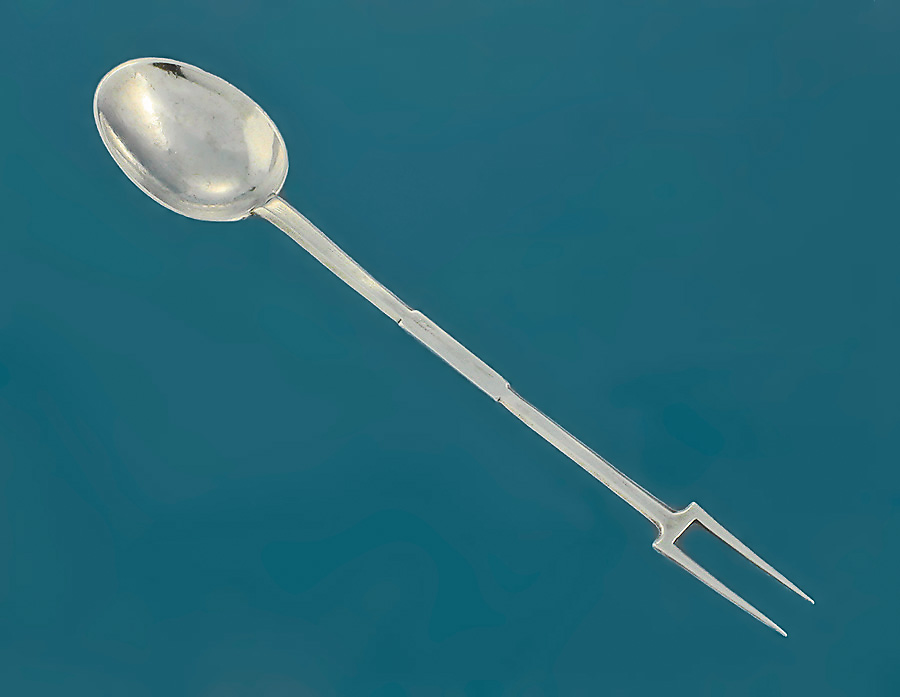
| |
Sucket Forks & Sweetmeats :
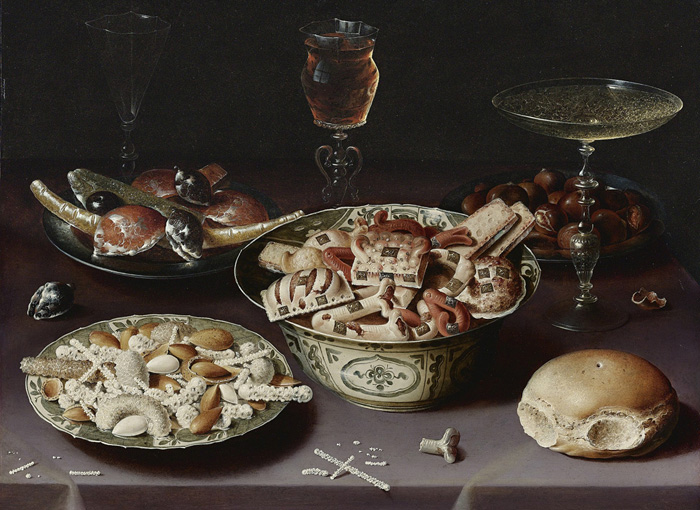
Osias Beert, "Still-Life of Porcelain, Pewter, Sweetmeat, Chesnuts",
Oil on Copper, between 1600 and 1619
'Sucket forks' were the only forks to survive the early 1600s ban on forks by the British clergy.
(It was deemed "an insult to touch God's meat with one's fingers").
These small two-tine forks were likely the first forks used in England,
although their early use is still uncertain.
Henry VIII and his son Edward VI both showed one in their inventory.
However, most surviving sucket forks date from c1650, and forward into the 18th century.
The small fork end was used for spearing sticky candied fruits,
the spoon for the syrup or pudding (succade) in which the fruits were deliciously bathed.
The most well known of these early fruits as candies was that of the citron, or Buddha's Hand tree.
These candies (called "sweetmeats") are depicted in many early Low Countries paintings,
appearing as "little rumpled sticks", as the 1600-1619 oil on copper painting above by Osias Beert.
Below is the actual small tree of fingered citron, its fruit segmented into finger-like sections.
Its confirmation resembles those seen on representations of the Buddha, and in China, is called "Buddha's Hand".
(Val Rahmeh Botanical Garden, Menton, France)
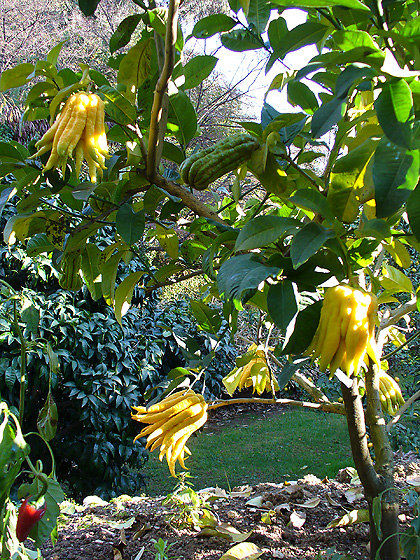
|
|
Also See by Robert King, brother to Adam King :
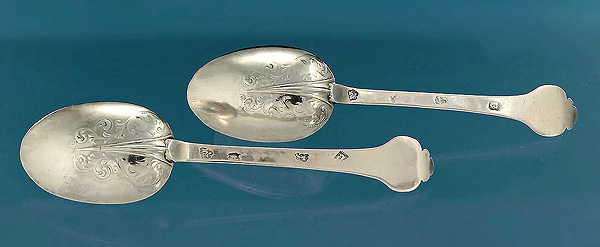
Good Pair of Charles II Silver Lace-Back Spoons, Robert King, London, 1678
We welcome and encourage
all inquiries regarding our stock. We will make every attempt to answer any questions you might
have.
For
information, call (901) 761-1163 or (901) 827-4668,
or
Email : mfcreech@bellsouth.net or mfordcreech@gmail.com
American Express, Mastercard, Visa and Discover accepted
 
M. Ford Creech Antiques & Fine Arts / 581
South Perkins Road / Memphis,
TN 38117 / USA /
Gallery Hours : Fri.-Sat. 12-6, or By Appointment
|









